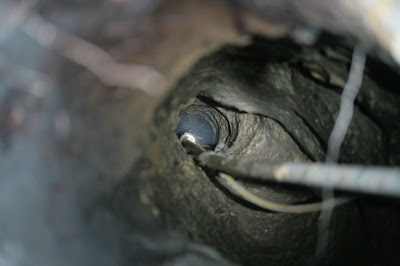 |
| Roggenmischbrot Ingredients Staged |
Today I set out to bake my German Rye Sourdough mixed Rye Bread. (Echtes Deutches Roggen Mischbrot aus Sauerteig) I really love eating the fine bakery breads in Germany, but found all pretenses at German bread in U.S.A. to be pale comparisons to the real thing. Being an enterprising sort not willing to give up on eating such a wonderful treat, I set out to teach myself how to bake a loaf of Roggenmischbrot that would do Germany proud.
I started out baking bread from five different Mischbrot recipies found online, each of which lacked the flavor or consistency of what I remembered. But the fifth loaf came close, so I decided to modify the last recipe myself based on previous baking experiences. Two attempts later, I found the recipe and baking process that delivered a wonderful crunchy crust genuine German loaf of sourdough bread. Two years later this recipe consistently bakes a perfect pair of bread loaves every time. (I'll put the sourdough starter instructions at the bottom of the blog page.)
The recipe (with pictures of today's baking effort below):
530 g sourdough starter and yeast starter additive
Yeast additive (mix next three ingredients and let rise - optional)
1/2 C General Purpose flour
1 Package Rapid Rise Yeast
1/2 C lukewarm water
Rye Sourdough starter (enough mixed with above yeast mixture to make 530 g)
300 g Rye flour
800 g Bread flour
30 g salt
600 ml water (just over 2 cups.)
Proof the sponge (add 1 C water and 1 C rye flour to sourdough starter in bowl and let stand/feed overnight)
(optional) Mix Yeast additive ingredients in small bowl and let rise about 15 minutes.
Meanwhile, measure out dry ingredients in large bowl and mix. Add the 530 g yeast/sourdough mixture. Start adding and mixing in the water until a well mixed sticky ball produced. Roll sticky ball out onto dry clean counter and knead 12 minutes, without adding extra flour. Rye dough must be stickier than white bread dough or the bread will come out dry and crumbly.
Put kneaded dough ball in large bowl, cover with clean kitchen towel and let rise for 1 hour to about doubled. Punch down, lightly knead and pinch into two loafs. Knead each loaf about 20 strokes and form into desired shape. Lightly sprinkle cornmeal on shallow baking pan (I use steel cookie sheet). Place loaves on pan, cover with towel and let rise for about 1 hour. (Slightly longer in winter than summer.)
Preheat oven well ahead of time to 475 degrees F. I preheat the oven with an Iron griddle on the bottom shelf, with the bread rack one level above. After the bread has risen, cut three slits into each loaf using a razor blade. Put the bread in the oven, and immediately pour 1/3 C water on the griddle to generate a cloud of steam - that's the secret to a crunchy crust. Bake the bread 10 minutes at 475 then lower the temperature to 400 degrees F and bake 50 minutes more. (Keep an eye out though, baking time is a bit shorter in the Summer.)
Remove from oven and place loaves on cooling rack. It's best to let it cool down a good bit, but I admit to slicing it while too hot and enjoying it right away.
 |
| Sourdough and Yeast Added to Flours and Salt |
Note - The optional yeast additive helps speed up the dough rising. If you want, just use the sourdough starter, but the dough rise times need to be extended. (Rule of thumb: double dough first rising, then allow loaves get to "loaf size" on second rising.)
 |
| Sticky Dough Ball Rolled onto counter and ready to knead |
 |
Really Sticky! (Notice wedding band on counter at top
I've kneaded that into my dough before!) |
 |
After 12 Minutes of Kneading. Dough ring, but no extra flour used.
It's a bit tacky to the touch. |
 |
| Leftover Rye Sourdough Starter poured into jar ready for next loaf |
 |
| Dough Has Risen! |
 |
| Punched down, divided, lightly kneaded and loaves formed. |
 |
| Risen to bread size and slicing top with razor. |
 |
| Notice Iron Griddle for temp control and steam generation. |
 |
| Sliced while still steaming hot! Crunchy Crust Yumminess! |
Rye Sourdough Starter
In suitable starter crock or jar (see picture above) mix one cup rye flour and one cup water and leave in warm place in kitchen. Every day for five days, pour off a small amount of starter and mix in 1/2 C rye flour and 1/2 C water. By 5th day, the starter should smell yeasty and bubble lightly. It's ready!
Long term care: Place starter in refrigerator and once a week, pour off small amount and mix in 1/2 C rye flour and 1/2 C water.
To use - "proof the sponge" the night before baking bread. Remove starter from refrigerator, pour into medium sized bowl, and add/mix-in 1 C rye flour and 1 C water. Let stand overnight and by morning a bubbly yeast infested bowl of goo will be ready to use to bake bread as described above. If you use the yeast additive, there will be enough starter left over to put back in the jar and into the refrigerator for the next loaf.































